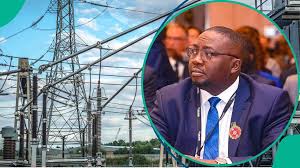A new report from the Africa Finance Corporation (AFC) has revealed that off-grid and self-generated electricity in Lagos State has now surpassed the entire power output of Nigeria’s national grid. The report, titled State of Africa’s Infrastructure Report 2025, highlights the deepening electricity access crisis in Nigeria and across the African continent.
The AFC’s findings show that off-grid systems, including small generators and private power plants, are now playing a larger role in electricity supply, especially in major African economies like Nigeria and South Africa. In Lagos alone, off-grid electricity capacity is estimated at more than 19 gigawatts (GW), while the national grid struggles to consistently deliver between 4 to 5GW. This means that Lagos, through private and self-generated sources, now produces nearly four times more power than the entire national grid.
According to the report, this situation shows both market innovation and failure of government-managed electricity infrastructure. The inability of the national grid to meet growing urban and industrial demand has forced millions of Nigerian households and businesses to turn to petrol and diesel generators.
The report noted that, “Captive generation is especially widespread among industrial and commercial users, with large enterprises investing in their own diesel and gas-fired power plants.” These plants, which are not connected to the national grid, range in capacity from 20 megawatts to as high as 200 megawatts in some industrial parks and cement factories.
Despite large investments by international organisations like the World Bank and the African Development Bank, who have pledged $40 billion to improve electricity access for 300 million people in sub-Saharan Africa by 2030, the AFC report warns that these goals may not be met. The report observed that unless urgent action is taken, the number of Africans without electricity may remain the same by 2030.
In South Africa, the situation is also shifting. A 2022 policy change that removed licensing requirements for embedded power generation led to a rapid increase in private electricity production. From just 23MW in 2019, embedded capacity in South Africa rose to 4.5GW by the end of 2023, and more than 1GW of private solar power was added in 2024 alone.
However, AFC cautions that these developments, while impressive on the surface, point to a deeper problem — the failure of centralised energy systems. The report explains that going off-grid is usually not a cheaper option, but a necessary response to poor electricity supply. A 2019 study by the Energy for Growth Hub found that self-generated electricity costs up to twice as much in Nigeria and South Africa compared to public supply, and up to four times more in Ethiopia.
This high cost of self-generated power reduces the competitiveness of local industries and limits economic growth. It also makes life more difficult for ordinary Nigerians who must spend a significant portion of their income on fuel to run generators.
AFC stressed that while solar rooftops attract international attention, the bulk of industrial self-generation comes from thermal sources like diesel and gas, which are often ignored in official statistics. The report described the growth in off-grid and captive power as a signal of failure, not success.
“Going off-grid is not always a low-cost solution,” the report said. “It is often a last resort.”
The report also pointed out that Africa has some of the world’s richest untapped energy resources — from solar and hydro to geothermal energy. But because of weak infrastructure and limited investment, these resources remain unused. In 2024, Africa added just 6.5GW of utility-scale power, compared to India’s 18GW and the United States’ 48.6GW in the same year.
From 2013 to 2023, electricity generation in Africa grew by less than 2 percent per year, which is below the population growth rate of 2.42 percent and economic growth of 3 percent. This means that, for the first time in 20 years, electricity consumption per person is now falling in Africa.
The AFC warned that if this trend continues, Africa risks being stuck in what it calls a “low-energy equilibrium”, where more people are connected to electricity, but the power supply is too weak and unreliable to support real development or industrialisation.
The report concluded by calling for urgent and large-scale investments in electricity generation and infrastructure. Without this, Africa’s dream of economic transformation and poverty reduction may remain out of reach. Leaders across the continent, it said, must choose to act quickly and scale up power supply or risk falling further behind.
